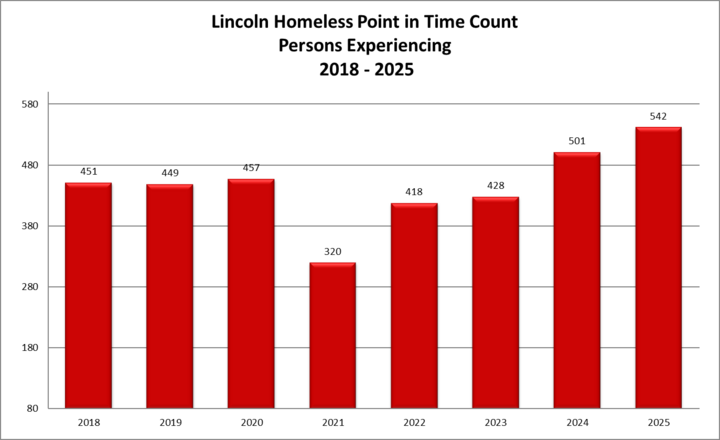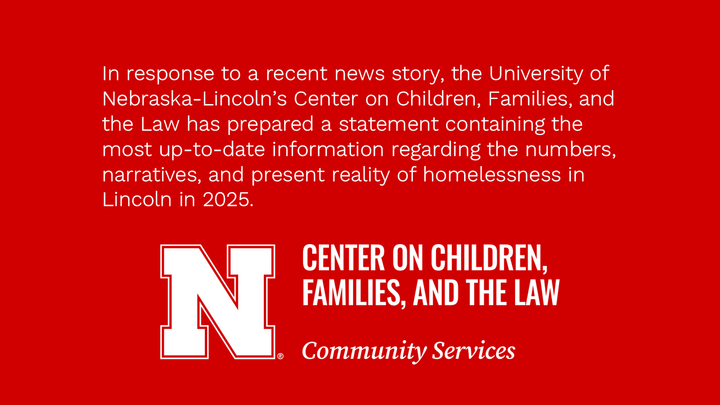This week’s 10/11 NOW coverage of the Lincoln Vital Signs report carried the headline: “Homelessness declines sharply in Lincoln.” The figures cited in that story, drawn from Point-in-Time (PIT) counts, describe conditions from 2012 through 2023. Those data are accurate as a historical snapshot of a single night in January of each year, but they do not describe what Lincoln is facing in September of 2025.
The most recent PIT data collected each January and maintained by the University of Nebraska–Lincoln’s Center on Children, Families, and the Law (CCFL) as the Homeless Management Information System (HMIS) lead for the City of Lincoln and Balance of Nebraska, shows a different picture than that portrayed in the article.

After steady declines through the late 2010s, homelessness in Lincoln has risen in the past two years, and in the single-night count in January of 2025, the Lincoln Continuum of Care counted 20% more persons experiencing homelessness on a single night in January of 2025 than on a single night in January of 2018.
- 2023: 428 persons
- 2024: 501 persons
- 2025: 542 persons
The causes are neither mysterious nor abstract. The federal resources for emergency rental assistance that stabilized thousands of Lincoln households during the pandemic have sharply decreased. At the same time:
- Rental costs have continued to climb, with vacancy rates in affordable units at historic lows.
- Wages for many working households have not kept pace with the cost of housing.
- Family homelessness is increasing, as parents and children exhaust short-term options like doubling up with relatives or staying in motels.
- Shelters remain stretched, often operating at or near capacity.
These pressures have combined to reverse the gains made earlier in the decade.
Per the U.S. Department of Housing and Urban Development (HUD), the Homeless Management Information System (HMIS) lead designated by the Continuum of Care is the UNL Center on Children, Families, and the Law.
For the most accurate and up-to-date information, including annual counts and shelter utilization, please reach out to UNL-CCFL or visit our homeless data dashboard.
Lincoln has made real progress in the past decade, particularly in reducing veteran homelessness. But 2025 is not a story of sharp decline. It is a story of renewed strain: fewer supports, higher housing costs, and more families and individuals being pushed into crisis despite our best efforts.
— University of Nebraska–Lincoln Center on Children, Families, and the Law, Community Services Division



